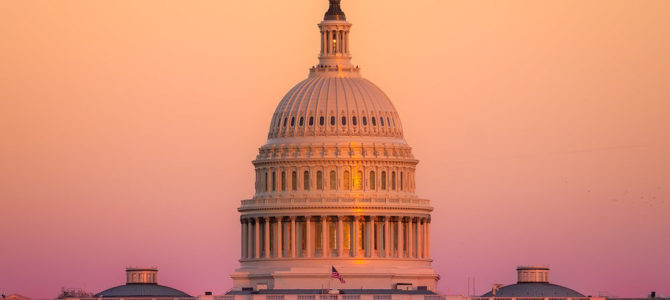
A new study finds 72 percent of Americans prefer traditional architecture for U.S. courthouses and federal office buildings, including majorities across political, racial, sex, and socioeconomic categories. The survey was conducted by The Harris Poll on behalf of National Civic Art Society and polled more than 2,000 U.S. adults.
These findings come in light of the possibility of a Trump administration executive order, appropriately named Make Federal Buildings Beautiful Again, that would require that new office buildings in Washington, D.C. be classical in design. Among other things, the order would revise the 1962 “Guiding Principles for Federal Architecture,” which forced modernism to be the official government building style. In response to the leak of the potential order, a bill entitled the “Democracy in Design Act” was proposed by House Democrats to overturn it.
However, based on the study, it appears Trump’s potential executive order would be happily received by a majority of Americans, with traditional architecture the clear winner for all demographic groups, including sex, age, geographic region, household income, education, race/ethnicity, and political party affiliations.
The study showed participants seven pairs of images depicting U.S. courthouses and federal office buildings. Each pair presented one building in a traditional style and one building in a modern style. For each pair, the survey question was: “Which of these two buildings would you prefer for a U.S. courthouse or federal office building?”
The selected images were edited to ensure fair comparisons. Factors such as sky color, angle of photo, light conditions, distance from building, weather conditions, and the like were all controlled either perfectly (e.g., sky color) or as perfect as possible via “careful photo selection and editing.”
Below is an example of one of the survey’s image pairings:

The resounding preference for traditional design was soundly bipartisan, being favored by 73 percent of Republicans, 70 percent of Democrats, and 73 percent of independents.

Preference for traditional architecture is shared across generations, being the top choice of 77 percent of those aged 65 or older, and 68 percent of those aged 18-34.

Both men and women prefer traditional architecture, but women are more likely than men to want U.S. courthouses and federal office buildings to be traditional, at 77 percent versus 67 percent, respectively.

Preference for traditional architecture bridges racial and ethnic divides, with the majority of black (62%), Hispanic (65%), and white (75%) Americans all favoring traditional architecture.

Preference for traditional architecture transcends regional divides too, with 73 percent favoring it in the Northeast, 73 percent in the South, 74 percent in the Midwest, and 69 percet in the West.

It is the clear choice of Americans making a household income under $50,000 (73 percent) and those making a household income over $100,000 (70 percent).

Higher earning and education levels do not diminish a preference for traditional architecture, as both those with a high school degree or less (72 percent) and those with a bachelor’s degree or greater (72 percent) favor traditional architecture also.

The findings of this study are supported by other surveys. In 2007, the American Institute of Architects (AIA) polled 2,200 Americans to find Americans’ 150 favorite buildings. Called “Americans’ Favorite Architecture,” the survey also found that Americans strongly preferred buildings designed in a traditional style.
At the time, the Wall Street Journal wrote that “Americans preferred older buildings that evoke ancient architectural styles such as Gothic, Greek, and Roman traditions. Of the top 50 [buildings], only 12 can be described as ‘modern-looking.’”
In 2020, an academic study of courthouse architecture found that people prefer neoclassical designs for courthouses. The study’s author, Jack L. Nasar, a professor of city planning at Ohio State University, wrote, “The findings agree with consistent findings that architects misjudge public likely public impressions of a design, and that most non-architects dislike ‘modern’ design and have done so for almost a century. Perhaps, through repeated experience, U.S. citizens have learned to see neoclassical designs or designs with those features as good examples of public buildings such as courthouses.”
Back in February, AIA, whose own study showed that Americans prefer traditional buildings, and other organizations spoke out against Trump’s executive order draft. Architects sent more than 11,400 letters to the White House demanding they be allowed to design buildings their commissioning audience finds offensive, ugly, and depressing.
“Mandating any single design style will undermine the value of the very architectural style it seeks to promote,” AIA 2020 president Jane Frederick said in a statement. “Buildings—both functionally and aesthetically—must be designed to serve their populations. It’s critical that communities have the ability to decide for themselves what architectural design best fits their needs.”
However, Americans have not been able to “decide for themselves” the types of buildings they prefer. The General Services Administration’s “Guiding Principles of Federal Design” officially rejected classic architecture, which the American people strongly favor.
Today, government architecture is now known for its international and brutalist stylings. Up until the 1990s, there were few to no buildings constructed in a traditional style. Since 1994, six of the 78 federal buildings constructed have been classical or traditional, just 8 percent, with the remaining 92 percent Modernist or postmodernist.







